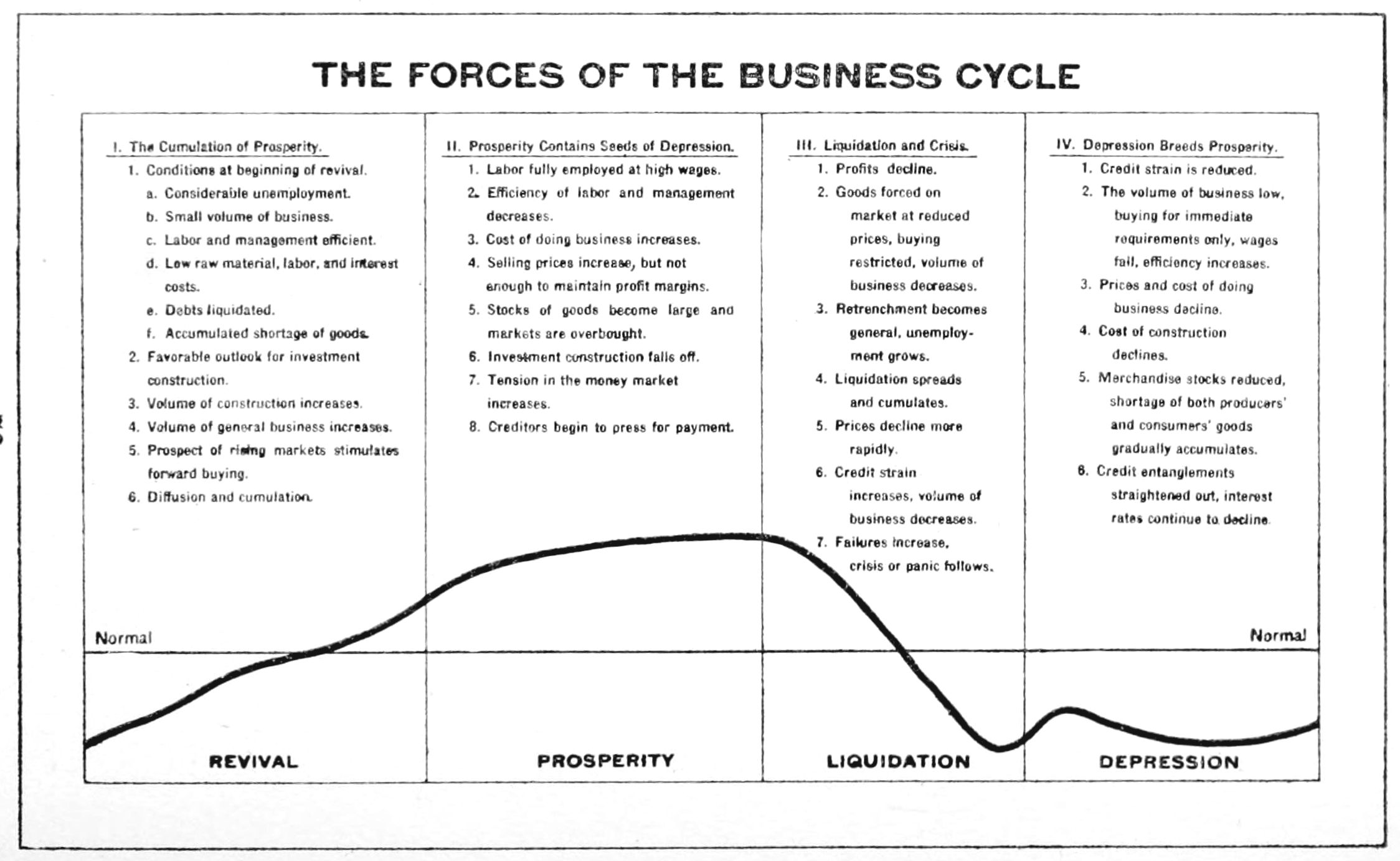|
Capacity Utilization
Capacity utilization or capacity utilisation is the extent to which a firm or nation employs its installed productive capacity. It is the relationship between output that ''is'' produced with the installed equipment, and the potential output which ''could'' be produced with it, if capacity was fully used. The Formula is the actual output per period all over full capacity per period expressed as a percentage. Engineering and economic measures One of the most used definitions of the "capacity utilization rate" is the ratio of actual output to the potential output. But potential output can be defined in at least two different ways. Engineering definition One is the "engineering" or "technical" definition, according to which potential output represents the maximum amount of output that can be produced in the short run with the existing stock of capital. Thus, a standard definition of capacity utilization is the (weighted) average of the ratios between the actual output of firms and t ... [...More Info...] [...Related Items...] OR: [Wikipedia] [Google] [Baidu] |
Productive Capacity
Productive capacity is the maximum possible output of an economy. According to the United Nations Conference on Trade and Development (UNCTAD), no agreed-upon definition of maximum output exists. UNCTAD itself proposes: "the productive ''resources'', entrepreneurial ''capabilities'' and production ''linkages'' which together determine the capacity of a country to produce goods and services." The term may also be applied to individual resources or assets; for instance the productive capacity of an area of farmland Agricultural land is typically land ''devoted to'' agriculture, the systematic and controlled use of other forms of lifeparticularly the rearing of livestock and production of cropsto produce food for humans. It is generally synonymous with bo .... Definition in more depth Productive capacity has a lot in common with a production possibility frontier (PPF) that is an answer to the question what the maximum production capacity of a certain economy is which means usin ... [...More Info...] [...Related Items...] OR: [Wikipedia] [Google] [Baidu] |
Capitalism
Capitalism is an economic system based on the private ownership of the means of production and their operation for Profit (economics), profit. Central characteristics of capitalism include capital accumulation, competitive markets, price system, private property, Property rights (economics), property rights recognition, voluntary exchange, and wage labor. In a market economy, decision-making and investments are determined by owners of wealth, property, or ability to maneuver capital or production ability in Capital market, capital and financial markets—whereas prices and the distribution of goods and services are mainly determined by competition in goods and services markets. Economists, historians, political economists and sociologists have adopted different perspectives in their analyses of capitalism and have recognized various forms of it in practice. These include ''Laissez-faire capitalism, laissez-faire'' or free-market capitalism, anarcho-capitalism, state capi ... [...More Info...] [...Related Items...] OR: [Wikipedia] [Google] [Baidu] |
Zvi Hercowitz
Zvi Hercowitz (born December 21, 1945 in Rosario, Argentina) is professor emeritus at Tel Aviv University's School of Economics and has been a member of the montetary committee of the Bank of Israel since 2017. He emigrated to Israel in 1969 and began his academic career at Tel Aviv University in 1980. He published extensively throughout his career, with notable works includingMoney and the Dispersion of Relative Prices", Journal of Political Economy, April 1981; "Output Growth, the Real Wage, and Employment Fluctuations" with Michael Sampson, American Economic Review, December 1991; and "Long-Run Implications of Investment-Specific Technological Progress" with Jeremy Greenwood and Per Krusell, American Economic Review, June 1997. He received the bachelor's degree in economics in 1973 and the master of arts in economics in 1975, both from the Hebrew University in Jerusalem. In 1980 he received his PhD in economics from the University of Rochester with his dissertation supervised ... [...More Info...] [...Related Items...] OR: [Wikipedia] [Google] [Baidu] |
James Crotty (economist)
James R. Crotty was an American Post-Keynesian macroeconomist whose research in theory and policy attempts to integrate the complementary analytical strengths of the Marxian and Keynesian traditions. He has made contributions to the social structure of accumulation (SSA) theory; the implications of radical uncertainty for macro theory and theories of financial markets. Education Crotty got a degree from Fordham University in 1961 and masters from Carnegie-Mellon University in 1963. Crotty received his Ph.D. from Carnegie Mellon University in 1973. Career Crotty did Economist and Operations Research Analyst at Mellon National Bank and Trust Company from 1963 to 1966. He was assistant professor at State University of New York at Buffalo and Bucknell University between 1966–72 and 1972-74 respectively. After teaching at the University at Buffalo, The State University of New York and Bucknell University, he joined the Economics Department of the University of Massachusetts Amh ... [...More Info...] [...Related Items...] OR: [Wikipedia] [Google] [Baidu] |
Susan Strange
Susan Strange (9 June 1923 – 25 October 1998) was a British scholar who was "almost single-handedly responsible for creating international political economy." Notable publications include ''Sterling and British Policy'' (1971), ''Casino Capitalism'' (1986), ''States and Markets'' (1988), ''The Retreat of the State'' (1996), and ''Mad Money'' (1998). She helped create the British International Studies Association. She was the first woman to hold the Montague Burton Professor of International Relations at the London School of Economics and was the first female academic to have a professorship named after her at the LSE. Early life Susan Strange was born on 9 June 1923 in Langton Matravers (County Dorset). She was the daughter of English aviator Louis Strange. She went to the Royal High School, Bath, and to the University of Caen in France, and graduated with a bachelor's degree in economics from the London School of Economics (LSE) during the Second World War. Like Robert ... [...More Info...] [...Related Items...] OR: [Wikipedia] [Google] [Baidu] |
Turkish Statistical Institute
Turkish Statistical Institute (commonly known as TurkStat; tr, Türkiye İstatistik Kurumu or TÜİK) is the Turkish government agency commissioned with producing official statistics on Turkey, its population, resources, economy, society, and culture. It was founded in 1926 and has its headquarters in Ankara Ankara ( , ; ), historically known as Ancyra and Angora, is the capital of Turkey. Located in the central part of Anatolia, the city has a population of 5.1 million in its urban center and over 5.7 million in Ankara Province, maki .... Formerly named as the State Institute of Statistics (Devlet İstatistik Enstitüsü (DİE)), the Institute was renamed as the Turkish Statistical Institute on November 18, 2005. References External linksOfficial website of the institute National statistical services Government agencies of Turkey, Statistical Organizations established in 1926 Organizations based in Ankara {{Sci-org-stub ... [...More Info...] [...Related Items...] OR: [Wikipedia] [Google] [Baidu] |
Board Of Governors Of The Federal Reserve System
The Board of Governors of the Federal Reserve System, commonly known as the Federal Reserve Board, is the main governing body of the Federal Reserve System. It is charged with overseeing the Federal Reserve Banks and with helping implement the monetary policy of the United States. Governors are appointed by the president of the United States and confirmed by the Senate for staggered 14-year terms.See Statutory description By law, the appointments must yield a "fair representation of the financial, agricultural, industrial, and commercial interests and geographical divisions of the country". As stipulated in the Banking Act of 1935, the Chair and Vice Chair of the Board are two of seven members of the Board of Governors who are appointed by the President from among the sitting governors of the Federal Reserve Banks. The terms of the seven members of the Board span multiple presidential and congressional terms. Once a member of the Board of Governors is appointed by the president ... [...More Info...] [...Related Items...] OR: [Wikipedia] [Google] [Baidu] |
Institute For Supply Management
Institute for Supply Management (ISM) is the oldest, and the largest, supply management association in the world. Founded in 1915, the U.S.-based not-for-profit educational association serves professionals and organizations with a keen interest in supply management, providing them education, training, qualifications, publications, information, and research. ISM currently has 50,000 members in more than 90 countries. It offers two qualifications, the Certified Professional in Supply Management (CPSM) and the Certified Professional in Supplier Diversity (CPSD), and, in partnership with the W.P. Carey School of Business at Arizona State University, sponsors CAPS Research. ISM competes against several educational, certification, and membership organizations serving the supply chain profession, including APICS, the Next Level Purchasing Association, the National Contract Management Association, the American Purchasing Society, The Center for Purchasing and Supply Chain Management ... [...More Info...] [...Related Items...] OR: [Wikipedia] [Google] [Baidu] |
Output Gap
The GDP gap or the output gap is the difference between actual GDP or actual output and potential GDP, in an attempt to identify the current economic position over the business cycle. The measure of output gap is largely used in macroeconomic policy (in particular in the context of EU fiscal rules compliance). The GDP gap is a highly criticized notion, in particular due to the fact that the potential GDP is not an observable variable, it is instead often derived from past GDP data, which could lead to systemic downward biases."True, the output gap is an elusive concept that should never have become a gauge for conducting public policy, and it may be larger than thought."Monetary policy: lifting the veil of effectivenes Speech by Benoit Cœuré, 18 December 2019 Calculation The calculation for the output gap is Y–Y* where Y is actual output and Y* is potential output. If this calculation yields a positive number it is called an inflationary gap and indicates the growth of ag ... [...More Info...] [...Related Items...] OR: [Wikipedia] [Google] [Baidu] |
Investment Spending
In macroeconomics, investment "consists of the additions to the nation's capital stock of buildings, equipment, software, and inventories during a year" or, alternatively, investment spending — "spending on productive physical capital such as machinery and construction of buildings, and on changes to inventories — as part of total spending" on goods and services per year. Krugman, Paul and Robin Wells (2012), 2nd ed. ''Economics'', p. 593. Worth Publishers. The types of investment include residential investment in housing that will provide a flow of housing services over an extended time, non-residential fixed investment in things such as new machinery or factories, human capital investment in workforce education, and inventory investment (the accumulation, intentional or unintentional, of goods inventories) In measures of national income and output, "gross investment" (represented by the variable ) is a component of gross domestic product (), given in the formula , where is ... [...More Info...] [...Related Items...] OR: [Wikipedia] [Google] [Baidu] |
Business Cycle
Business cycles are intervals of Economic expansion, expansion followed by recession in economic activity. These changes have implications for the welfare of the broad population as well as for private institutions. Typically business cycles are measured by examining trends in a broad economic indicator such as Real Gross Domestic Production. Business cycle fluctuations are usually characterized by general upswings and downturns in a span of macroeconomic variables. The individual episodes of expansion/recession occur with changing duration and intensity over time. Typically their periodicity has a wide range from around 2 to 10 years (the technical phrase "stochastic cycle" is often used in statistics to describe this kind of process.) As in [Harvey, Trimbur, and van Dijk, 2007, ''Journal of Econometrics''], such flexible knowledge about the frequency of business cycles can actually be included in their mathematical study, using a Bayesian statistical paradigm. There are numer ... [...More Info...] [...Related Items...] OR: [Wikipedia] [Google] [Baidu] |


.jpg)

